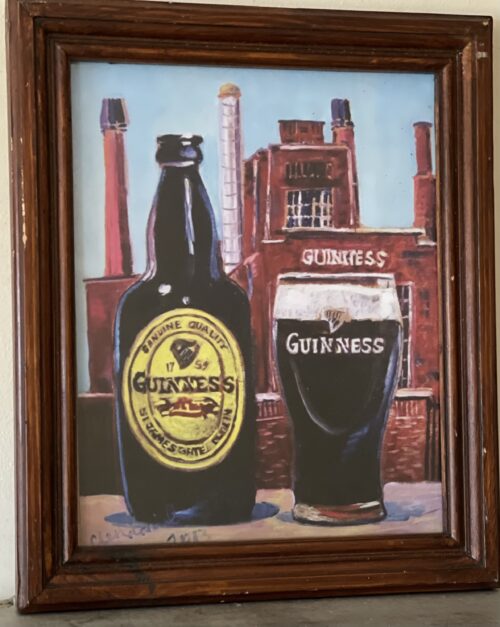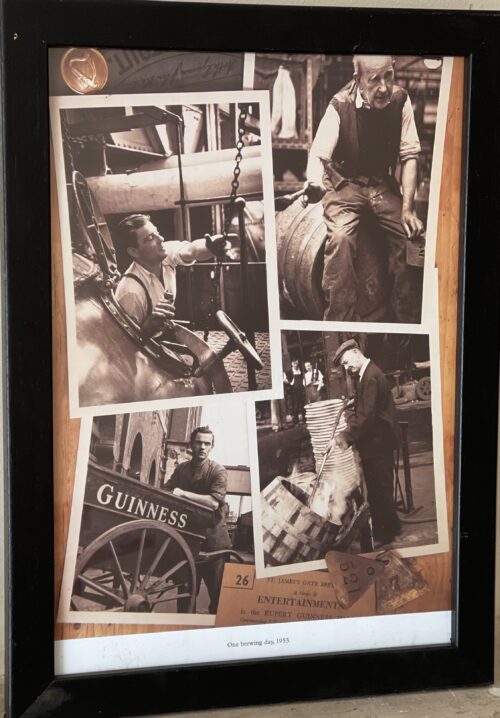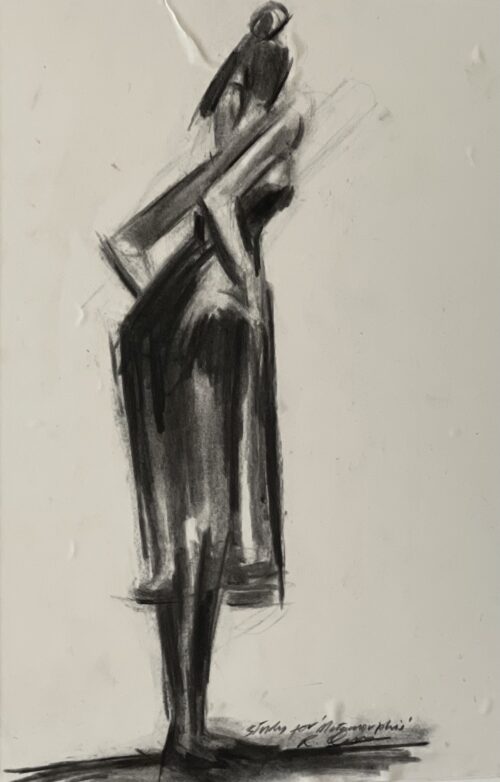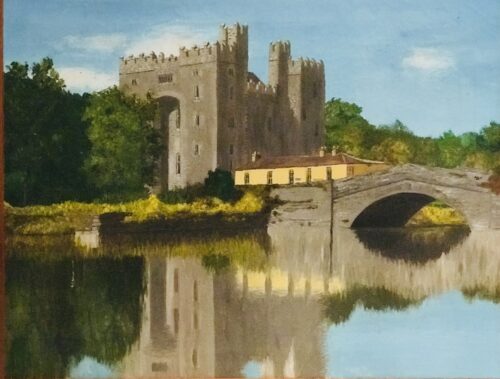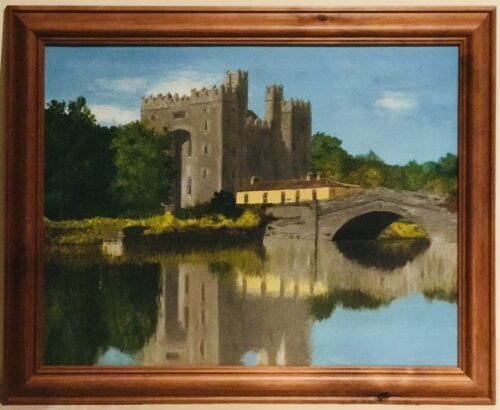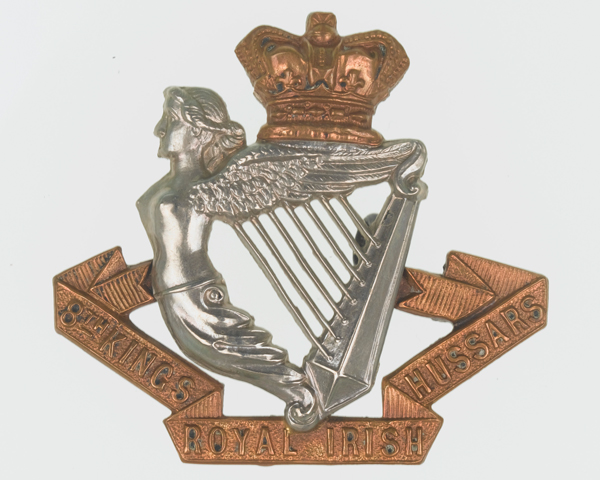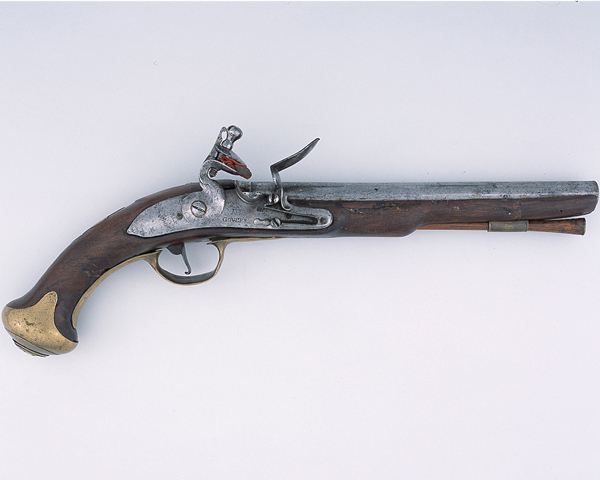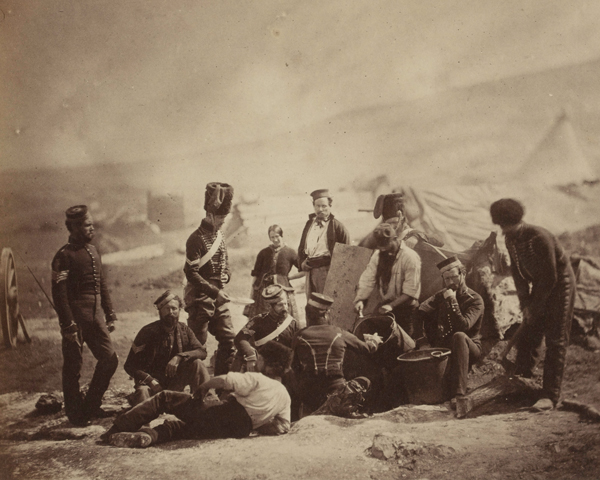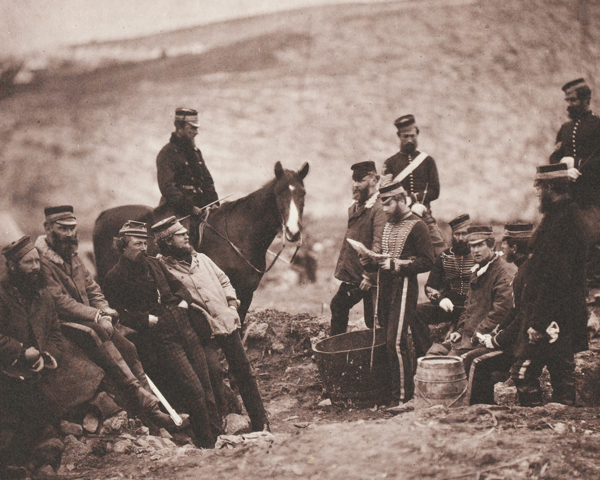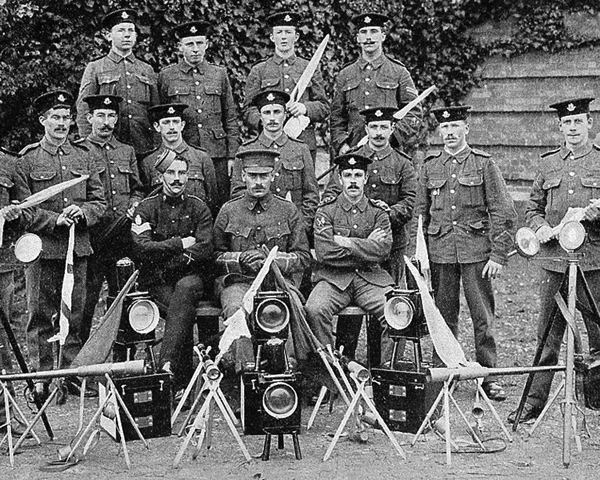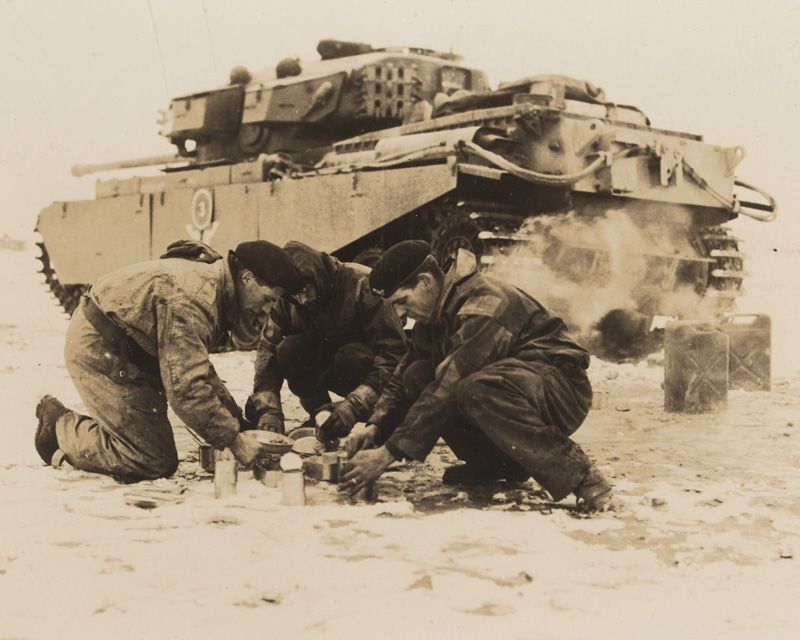The Garden suffered economically during the
Great Depression. Boxing was at a low point in Boston, as fighters chose to work in other cities, wrestling attendance was down, and hockey attendance waned after
Ace Bailey suffered a severe head injury at the hands of Bruin
Eddie Shore in 1933. During this period
Sonja Henie's Hollywood Ice Revue and the
Ice Follies were successful draws and kept the Garden afloat. In 1939, a financial dispute between Henie and her managers led Walter Brown and eight other arena managers to found the
Ice Capades.
Design
Rickard built the arena specifically with boxing in mind, believing every seat should be close enough to see the "sweat on the boxers' brows". Because of this design theme, fans were much closer to the players during Bruins and Celtics games than in most arenas, leading to a distinct hometown advantage. This physical proximity also created spectacular acoustic effects, much like the
Chicago Stadium. When teams made playoff appearances, and a sold-out crowd was chanting or screaming, the impact was enormous.
Due to the success of the Celtics in the 1980s, the Boston Garden was one of the most difficult buildings for visiting NBA teams. During the
1985–86 season, the Celtics were 40–1 at home, setting the NBA record for home court mastery (before the
San Antonio Spurs tied the record 30 years later in the
2015–16 season). They also finished the post-season undefeated at home. Combined with the following regular season, the Celtics' Garden record was an amazing 79-3 between the 1985–86 and
1986–87 regular seasons.
While the
parquet floor was an important part of the history of the Celtics,
[38] it was not originally part of the Garden. The parquet floor was built and installed in the aforementioned
Boston Arena(first home of the Bruins hockey team) and moved to the Garden in 1952. It is said the Celtics knew which way the basketball would bounce off any section of the floor; this was one contributing factor to the Celtics' many NBA championships.The floor became as much a part of Boston sports lore as the
Green Monster of
Fenway Park. The parquet floor was used at the FleetCenter until December 22, 1999. Portions of the original floor are integrated with new parquet.
The floor was cut into small pieces and sold as souvenirs along with seats and bricks. The Naden/Day Industries overhead scoreboard (which was electro-mechanical, not electronic, as more recent arenas used) hung in the Boston Garden-themed food court of the
Arsenal Mall in
Watertown until 2018, when the mall began to undergo renovations.The Celtics' old championship banners and retired numbers now hang at the team's
now-former practice facility in
Waltham; a new set of banners were made for the move to the FleetCenter (now
TD Garden). The Celtics used to raise
Eastern Division championship banners at Boston Garden in the 1960s, but stopped this practice by the 1970s. Likewise, the Bruins made a new set of banners when they moved to the FleetCenter, which were again replaced after the
2011 Stanley Cup Finals with six new banners, each using the contemporary logo of the Bruins when each Cup victory occurred. The Bruins also raised numerous
Adams Division,
Presidents' Trophy and
Wales Conference championship banners at the old Garden, but due to lack of space, they consolidated them into one single banner each upon moving to TD Garden

Shot of the New York Rangers practicing in Boston Garden
Flaws
The Garden's hockey rink was undersized at 191 by 83 feet (58.2 m × 25.3 m), some nine feet shorter and two feet narrower than standard (200 ft × 85 ft or 61 m × 26 m), due to the rink being built at a time when the NHL did not have a standard size for rinks. This size was even smaller than the original
Boston Arena's standard-length 200-by-80-foot (61 m × 24 m) rink,
still in use in the 21st century for
college hockey with a new, widened 90-foot (27 m) upgrade in 1995, as the Boston Arena was the first rink to host the Bruins in 1924–25. Visiting players were frequently thrown off their games by the differing setup of the players' benches being on opposing sides of the ice, as well as the non-standard penalty box locations. This setup, still occasionally seen in college hockey, was done to ensure that each team could have a bench connected to their dressing room. Towards the end of the Garden's life as an arena, the NHL required all rinks to have both benches on the same side: the Garden obliged by moving the penalty boxes (formerly adjacent to the Bruins' bench) to the side vacated by the visitor's bench, and as such visiting teams were required to skate across the ice to head back to their rooms. The smaller ice surface allowed the Bruins to dump the puck in the offensive zone and then
crush their opponents with checks along the boards. The shorter rink was well-suited to the rushing style of Bruins defenseman
Bobby Orr; he was able to get from one end of the ice to another faster than in a standard-size rink. Its visitors' dressing room was notoriously small, hot, and underserved by plumbing.
The Garden's earlier
Bulova-crafted "Sports Timer" game clock system using the typical analog dial-type game clock design of that era, said to have been installed at the Garden early in the 1940s, and
essentially identical in appearance and function to the one used in the
Chicago Stadium until September 1975,was removed and replaced by an all-digital-display unit created by the Day Sign Company of
Toronto in time for the
1970 Stanley Cup playoffs, and remained in use until the Garden's closure.
The Garden had no air conditioning, resulting in
fog forming over the ice during some Bruins' playoff games. During Game 5 of the
1984 NBA Finals, the 97 °F (36 °C) heat in the facility was so intense that
oxygen tanks were provided to exhausted players.
The Bruins'
Stanley Cup finals appearances in
1988 and
1990 were both disrupted by power outages. On May 24, 1988, a power transformer in the
North End blew up during Game 4 of the Finals between the Bruins and the
Edmonton Oilers: the contest ended, being ruled as a 3–3 tie. Two years later, on May 15, 1990, the lights went out during an overtime finals game between the same two teams. However, the lights were on an automatic timer and could be turned back on this time with the game ending with a 3–2 triple overtime win for the visiting Oilers.
Notable events
Music
Rudy Vallée and his orchestra performed at the Garden on April 21, 1932. Vallée returned to the Garden on October 23–24, 1938 for a "battle of the bands" with
Benny Goodman that drew 25,000.
The first rock concert held at the Garden was on November 30, 1956, when the building hosted
Alan Freed's "Biggest Show of 1956".
The Beatles played a show at the Garden during their first US/Canada tour on September 12, 1964, staying at the then-attached
Hotel Madison.
James Brown played a notable show at the Garden on April 5, 1968, the night after
Martin Luther King Jr. was
assassinated. Only 2,000 attended the sold-out show, because the mayor,
Kevin White, and community leaders had encouraged people to obtain refunds on their tickets and instead to watch a hastily arranged television broadcast of the concert on the local public station
WGBH-TV. Mayor White appeared on stage, asking the Garden audience and the city to peacefully remember King, and James Brown's words and presence was credited
with helping to keep the peace in Boston. WGBH rebroadcast the concert twice that night, an action which helped keep people off of the street at a time other major cities were erupting in riots. The performance was released on DVD as
Live at the Boston Garden: April 5, 1968.
Elvis Presley performed in Boston only once, at the Garden on November 10, 1971 pulling a full crowd of about 16,500 and receiving high praise from
Rolling Stone journalist
Jon Landau for his performance.
In 1972,
The Rolling Stones were scheduled to perform at the Garden when two members were detained by Rhode Island police. Fearful that angry Stones fans (already in the Garden awaiting the show) would riot, mayor
Kevin H. White intervened with the Rhode Island authorities and secured the musicians' release so they could play their set in Boston. The band had also played at the venue in 1965 and 1969 and would again in 1975.
In 1973,
The Who were scheduled to perform at the Garden and nearly didn't perform due to the band being detained by police after destroying a hotel room in
Montreal, Quebec, Canada, where they'd appeared the previous evening. The band was eventually released from jail and managed to arrive at the Garden in time for their show and took out their frustrations for being arrested the night before by delivering a blistering set and taunting the Montreal police, dedicating their performance of "
Won't Get Fooled Again" to them. Who drummer
Keith Moon (for the rest of the
Quadrophenia tour) changed one of the lyrics to the song "Bell Boy" from "remember the gaff where the doors we smashed" to "remember Montreal at the hotel we trashed" or variations of the band being arrested. Almost three years later in March 1976, Moon collapsed at his drum kit during the second song "Substitute" after downing muscle relaxers and brandy before the show. The band had to reschedule the performance for early April and the rescheduled performance turned out to be one of The Who's best performances of the 1976 tour.
The Who's last performance at the Garden was in December 1979 on their first tour following Moon's death. That performance was almost canceled after several fans at a Who show in
Cincinnatidied while trying to get in early for a general admission show. The Boston City Council held a televised hearing on whether to allow the show to go forward and decided to permit it because there was no general admission seating in Boston. The show was marred by a fan throwing a firecracker on stage, causing
Pete Townshend to scream obscenities in the general direction of the source before getting on with the tension-filled show.
In 1975,
Led Zeppelin were banned from performing at the Boston Garden after concert fans were allowed in the lobby due to sub-freezing temperatures while waiting for tickets to go on sale for the band's show. Turning on the generosity of their hosts, some of the fans rioted, broke into the Garden and trashed the seating area, the ice, and most of the refreshment stands, leading then-mayor White to cancel the upcoming show and ban the group for five years.
In 1976,
KISS was banned from performing at the Garden because the band refused to comply with the venue's no pyrotechnic policy after fire marshals had watched their flamethrowers hit the ceiling at the Orpheum.
Pink Floyd were the first band to perform at the Boston Garden with a stage set that cost over $1 million on their 1977
Animals tour (they first played there in 1975 on the band's
Wish You Were Here tour). According to Pink Floyd drummer
Nick Mason's book
Inside Out: A Personal History of Pink Floyd, Pink Floyd almost got banned from the Boston Garden after their 1977 performances because the band, unknown to the venue's owners, used pyrotechnics during their performance (the exploding pig for "
Pigs (Three Different Ones)" and firework displays on "
Sheep" and "
Money"). However, the band's road crew outsmarted the fire marshals by removing the pyro props quickly after they used them in the shows to prevent the band from being banned and also according to Mason's book since their manager had an Irish name (
Steve O'Rourke), the band escaped being arrested. The band decided not to play at the venue again, instead opting for the
Providence Civic Center and
Foxboro Stadium on their 1987/1988 and 1994 tours, respectively.
The Grateful Dead performed at the Boston Garden more times than any other band, with 24 performances from 1973 to 1994 (as an opener or middle of bill or headliner), and were intended to be the last band to play the Garden, with six shows scheduled for September 13th, 14th, 15th,17th, 18th, and 19th 1995, which were canceled due to the death of Jerry Garcia on August 9, 1995. The ticket for the 19th stated "lets tear this old building down" referencing the song "
Samson and Delilah". The Dead did not play at the Garden for a number of years following an incident in which they were caught grilling lobsters on a fire escape before a performance.The Grateful Dead have released
Dick's Picks Volume 12 and
17 culled from performances at the Garden on June 28, 1974 and September 25, 1991.
Detroit rocker
Bob Seger recorded a bulk of his 1981 double live album
Nine Tonight at The Boston Garden in October 1980. Five years before,
The J. Geils Band recorded most of their November 1975 show at The Boston Garden for their 1976 double live album
Blow Your Face Out. The Geils band returned again, and had the historical distinction of being the first band in history to sell out a three-night stand in 1982 at the Garden featuring hometown favorites
Jon Butcher Axis as opening act.
Hometown band
Aerosmith performed at the Boston Garden ten times from 1975 to 1995 and twice played
New Year's shows there, ringing in the 1990 and 1994 New Years.
Other acts that performed at the Garden include
Pavarotti,
Frank Sinatra,
Liberace,
Duke Ellington,
Judy Garland,
Arthur Fiedler and the
Boston Pops,
U2,
Bruce Springsteen,
Guns N' Roses,
Grace Slick with
Jefferson Airplane,
Jethro Tull (who had 15 headlining performances there between 1971 and 1980 which is the most for a band, their last being on 1980's A Tour before switching to the Worcester Centrum in 1982),
Bob Dylan with
The Band,
Diana Ross & the Supremes,
The Jackson 5,
Queen,
Rush,
Styx and
George Burns and Gracie Allen among others.
The opening of the
Worcester Centrum and the
Great Woods Amphitheater caused a massive drop in concerts at the Garden from the early 1980s until the early 1990s. The age of
glam metalpractically passed the Garden by completely, as most bands from that era played the Centrum in the winter and Great Woods in the summer. Poor acoustics, a busy sports schedule, expensive booking fees, and difficulty with local unions all contributed to the migration to more modern venues outside of Boston.
Under new Garden President Larry Moulter, bands started returning to the Garden in the late 1980s and early 1990s, highlighted by
Pearl Jam's multi-night stand in 1994, and the Dead's lengthy residences there before the Garden finally closed. The final
New Year's Eve show at the Boston Garden was performed by the Vermont band
Phish on December 31, 1994. On that night, the band rode a giant hot dog float above the audience; the hot dog is now in the
Rock and Roll Hall of Fame in
Cleveland.
Sports
The facility hosted games in the
1929,
1930,
1932,
1939,
1941,
1943,
1946,
1953,
1957,
1958,
1970,
1972,
1974,
1977,
1978,
1988, and
1990 Stanley Cup Finals where the Bruins won two of their championships at the Garden in 1939 and 1970. The 1929 Stanley Cup championship was won at New York's
Madison Square Garden (III). The 1941 Stanley Cup championship was won at Detroit's
Olympia Stadium. The 1972 Stanley Cup championship was won at New York's
Madison Square Garden. The
Montreal Canadiens claimed the Stanley Cup at the Garden in 1958, 1977 and 1978, while the
Detroit Red Wings won the cup there in 1943. In 1990, the
Edmonton Oilers claimed their fifth Stanley Cup at the Garden. The 1932 series did not involve the Bruins; Game 2 between the
Toronto Maple Leafs and
New York Rangers was played there due to a scheduling conflict at MSG III.
The facility has also hosted games in the
1957,
1958,
1959,
1960,
1961,
1962,
1963,
1964,
1965,
1966,
1968,
1969,
1974,
1976,
1981,
1984,
1985,
1986, and
1987 NBA Finals, in which the Celtics won nine of their championships on home court in 1957, 1960, 1961, 1962, 1964, 1965, 1966, 1984, and 1986. The only visitor to claim the NBA championship at the Garden were the
Los Angeles Lakers, who won the 1985 Finals.
In addition to championship rounds, the Garden also hosted the
NBA All-Star Game in 1951, 1952, 1957, and 1964, and the
NHL All-Star Game in 1971. The NCAA
Frozen Four was contested there from 1972 to 1974. Starting in 1955, the
Beanpot tournament, featuring the four major college hockey programs in the Boston area, was held at the Garden annually on the first week of February.
Boston Garden was the first arena to host the Stanley Cup Final and NBA Finals at the same time in 1957. It occurred again in 1958 and 1974.
The Boston Garden was a frequent host of Vince McMahon's
WWF for many years throughout the 1970s and 1980s, in the form of wrestling "
house shows" (non-televised matches), and superstars like
Hulk Hogan,
André the Giant,
Randy "Macho Man" Savage,
Tito Santana,
Ricky "The Dragon" Steamboat and many others would regularly appear there. But despite this relationship, the Boston Garden was host to only one pro wrestling pay-per-view in its history:
the 1993 Survivor Series. The WWF held their final house show in the Boston Garden on May 13, 1995.
Rallies and speeches
The Boston Garden hosted many religious conclaves. Evangelists who appeared at the Garden include
Aimee McPherson (1931),
Billy Graham (1950) Bishop
Fulton J. Sheen (1953), and
Jimmy Swaggart (July 29–31, 1983).
The Garden was also the site of a number of political rallies. 20,000 people attended a 55th birthday celebration for President
Franklin D. Roosevelt on January 29, 1937. FDR also drew another 20,000 for a political rally 1940. On May 2, 1943, the night after the
Hollywood Victory Caravan came through town, a Jewish anti-Nazi rally was held at the Garden. The United War Fund hosted a rally headlined by
Jimmy Durante,
Greer Garson, and the
Boston Symphony Orchestra. The day before the 1960 presidential election, a rally for
John F. Kennedy drew 20,000 while police estimated that there were another 100,000 people in the streets outside the Garden. Other politicians to hold rallies at the Garden include presidential candidates
Thomas Dewey and
Dwight D. Eisenhower and former Boston mayor and Massachusetts governor
James Michael Curley.
Former Irish Prime Minister and President
Éamon de Valera spoke at the Garden On March 24, 1948 (Easter Sunday). British Prime Minister
Winston Churchill spoke there March 31, 1949 as part of a
Massachusetts Institute of Technology Convocation.
Final years
By the early 1970s, Boston Garden was deteriorating. The building had no air conditioning and some seats were obstructed by structural pillars. The seats were decades old and terribly cramped. With a capacity of less than 15,000, it was one of the country's smallest major league sports arenas. The Garden also lacked luxury suites, which had become an important and much-needed source of revenue for teams in professional sports. In 1972, Boston Mayor
Kevin White announced plans for a new 18,000-seat arena to be built near
South Station. Plans for the arena fell through when
Storer Broadcasting, then-owner of the Boston Garden and the Bruins, announced they would not be able to pay the $24 to $28 million required for the new arena. In 1977 the Boston Celtics negotiated with the city of
Quincy to have a $30 million, 21,000-seat arena built there.
In 1979, Boston Celtics owner
Harry T. Mangurian, Jr. threatened to build a new arena unless the Boston Bruins, who owned the Garden, agreed to lower the rent. The team met with Ogden Corp., owners of
Suffolk Downs, who proposed a $20 million, 18,000-seat arena to be built near the racetrack. They also met with the
Boston Redevelopment Authority, who proposed $40 million, 15,000-seat arena that would be built behind the existing Garden and paid for with state bonds.
]The Bruins meanwhile announced plans to move to a proposed $50 million sports complex on the site of the then closed
Rockingham Park in
Salem, New Hampshire. The plans for the Salem site were eventually killed by the
New Hampshire General Court. Meanwhile, the track remained closed until May 26, 1984.
In response to the Bruins' plans to leave the state, U.S. Senator
Paul Tsongas established a committee to put forward a plan for a new Boston arena. The committee, chaired by Tsongas, proposed a $56.8 million, 16,000 seat arena that would be paid for by tax-exempt bonds floated by an Arena Authority and by raising the commonwealth's hotel tax from 5.7% to 8%. The naming rights to the proposed arena were sold to
Sheraton for $2 million.Tsongas' proposal died in the
state legislature.
While a preservation study conducted by the
Boston Landmarks Commission found the North Station/Boston Garden complex to be a significant example of
Art Deco, the
Massachusetts Historical Commission did not consider it eligible for listing in the National Register.
In 1985, Garden-owner
Delaware North and developer Rosalind Gorin each submitted proposals for a new arena, hotel, and office development. Both proposals were rejected by the Boston Redevelopment Authority and Mayor
Raymond Flynn.The two groups later resubmitted plans, with Delaware North's calling for a renovation of the Garden instead of having it demolished.Gorin's plan called for the city to claim the Garden by eminent domain, as Delaware North refused to sell the Bruins and the Garden to a group led by Gorin, Paul Tsongas, and former Bruins
Wayne Cashman and
Bobby Orr.Delaware North was awarded the rights to construct the new arena, but poor economic conditions delayed the project.
On May 8, 1992, Delaware North announced they had secured funding for a new arena in the form of $120 million worth of loans evenly split among
Bank of Boston,
Fleet Bank of Massachusetts, and
Shawmut National Corporation. That December, a bill approving construction of the new arena was killed in the
Massachusetts Senate by
Senate President William M. Bulger. Legislative leaders and Delaware North attempted to reach an agreement on plans for the new arena, but in February 1993 Delaware North owner
Jeremy Jacobs announced he was backing out of the project as a result of the legislature's demand his company pay $3.5 million in "linkage payments".
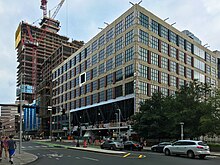
Construction progress of The Hub on Causeway in August 2018. The Hub on Causeway sits on the former site of the Boston Garden.
Two weeks later, after a new series of negotiations, the two sides came to an agreement, and on February 26 the Legislature passed a bill that allowed for construction of a new sports arena.
[68] Construction began on April 29, 1993. Shawmut Bank purchased the naming rights for the new building with the intent of calling it the "Shawmut Center", but it was purchased by FleetBank before the new arena opened, and thus the "FleetCenter" opened on September 30, 1995. In 2005, the FleetCenter was renamed the "TD Banknorth Garden", as Bank of America had acquired Fleet Bank and relinquished its predecessor's naming rights, selling them to
TD Banknorth. As of 2009, it is known as
TD Garden.
[69][70]
The
Grateful Dead were scheduled to play September 13th, 14th, 15th, 17th, 18th and the 19th being the final event at the garden. The ticket for the 19th featured "lets tear this old building down" referencing the song Samson and Delilah. These shows were cancelled upon
Jerry Garcia's death. The last official game played at the Garden took place on Sunday, May 14, 1995. It was game five of an NHL Eastern Conference quarterfinal series between the Boston Bruins and
New Jersey Devils where the New Jersey Devils beat the Bruins, 3–2, winning the series four games to one and eliminating the Bruins from the 1995 Stanley Cup Playoffs. The last event at the Boston Garden was a preseason game between the Boston Bruins and the Montreal Canadiens on September 26, 1995.
[71] In a special post-game ceremony, which included many former Bruins greats, the banners and retired numbers were removed. The Garden sat vacant for three years before it was demolished in 1998. The site where the building once stood is currently under construction for a commercial development known as
The Hub on Causeway.
References


















